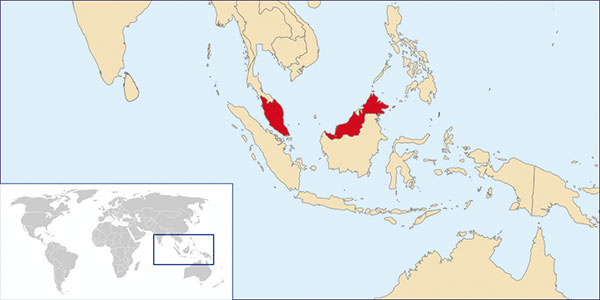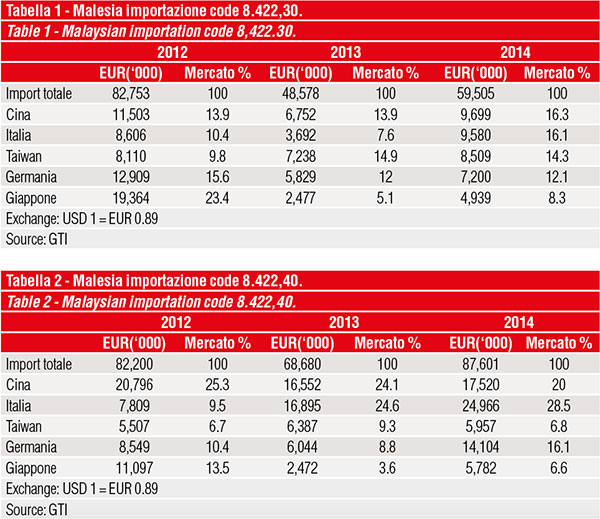Markets to explore: Malaysia
 The column dedicated to Italian companies operating in the packaging with a keen eye to the possibilities of growth and development abroad Born out of the collaboration between ICE-Agenzia and Edizioni Dativo. The network of ICE offices abroad will provide a regular update on the development of the packaging in the short/medium term in selected countries.
The column dedicated to Italian companies operating in the packaging with a keen eye to the possibilities of growth and development abroad Born out of the collaboration between ICE-Agenzia and Edizioni Dativo. The network of ICE offices abroad will provide a regular update on the development of the packaging in the short/medium term in selected countries.

The converting, packaging and wrapping industry - constituting a single chain in Malaysia - engenders thriving sector among the most dynamic and vibrant in the nation’s economic picture. In particular, the packaging and wrapping materials sector has grown steadily in recent years.
Materials: resins dominate
To date the country counts a hundred or so local producers of packaging materials, with an output that almost completely satisfies the demands of Malayan industry; much of their production is though exported to China, Hong Kong, Singapore, Japan and Indonesia.
Offering a breakdown, Malaysia produces more than 60% of the resins used for the production of plastics and exports plastics as well as primary and secondary packaging materials.
The main resins used in the packaging industry are PET, HDPE, LDPE, PVC, PP, PS, PE and ABS.
The availability of almost 2 million tons/year of resins produced locally has in particular supported the growth of plates, sheets, coils, strips and tubes, finished products for packaging and wrapping, most of which are exported. Malaysia is also a major supplier to the world of plastic bags, films and other materials for flexible packaging, especially in Southeast Asia, Japan and Australia.
The import of packaging machines
Over the last three years, the introduction of new technologies and processes in local manufacturing has raised the quality and quantity of production, while triggering greater demand for packaging and wrapping machines and systems; the domestic production though that is still very limited.
Demand is therefore almost completely met by imports, whose growthrate over the last decade has been constantly on the rise. This trend has also been confirmed for the coming years by leading market analysts.
Outlet sectors. The food and beverage sector is the prime packaging and wrapping system user. In particular equipment for the packaging of petroleum derivates, chemicals, pharmaceuticals and personal care products shows steady growth.
The development of domestic consumption is associated with the improvement of living standards in the country, that currently boasts the highest per capita income of ASEAN nations (second only to Singapore), or more than US 15,000 dollars which, according to the authorities will exceed 20,000 US dollars by 2020.
In particular, in the coming years, demand for systems for labeling and coding by the food, pharmaceutical and cosmetics industries will grow much but, especially in the food sector, the demand for classic machinery and equipment such as metering, filling, sealing systems will stay high.

The countries of origin. The most popular machines in the country come from China Taiwan, Japan, Italy and Germany and cost appears as a decisive factor in choice and purchasing decisions
Local entrepreneurs appreciate Italian technology, which however is much more expensive than Chinese or Taiwanese, although not comparable in terms of quality and reliability. Note that, often with the same offer, Malaysians prefer to buy Japanese machines, because they consider the after-sales service better structured and speedier.
The statistics on imports and Italian quotas. Malaysia uses the following customs codes:
1) HS 8422.30: Machinery for filling, closing, sealing or labeling bottles, cans, boxes, bags or other containers; machines for capsuling bottles, jars, tubes and similar containers; machinery for aerating beverages;
2) HS 8422.40: Other packaging or wrapping machinery (including heat-shrink wrapping machinery).
The import of machines (listing 8.422.30) in 2014 grew by more than 20% compared to 2013.
The Italian market share was 16.1%, almost on par with that of China, rising from fifth place in 2012 to second in 2014. The import of packaging machinery “listing 8422.40” has experienced strong growth in 2014, with an increase of over 27%. Italy is the first exporting country, with a market share of over 28%, Italian exports having increased 48% compared to 2013.
Customs duties. Import duties do not apply for packaging and wrapping machinery. From 1 April 2015 a GST/Good and Service Tax of 6% has been introduced.
In conclusion
Over the past five years Malaysia has registered a steady growth of its GDP at more than 5% per annum, which is associated with the development of the manufacturing sector, with products for both the domestic market and for export.
In this view of things, the introduction of new packaging technologies, machinery and equipment was one of the keys to position the Italian output as the most popular and appreciated in AEAN/Pacific area countries. Economic forecasts for growth in the medium term in the country should ensure the development of the manufacturing sector that uses these machines. In this field being able to guarantee an efficient and rapid after sales service is decisive in increasing sales and improving one’s market position.
NOTE The project is coordinated ICE-Agenzia headquarters in Rome, by the Industrial Technology-, Energy-, and Environment Office headed by Ferdinando Pastore. Contacts: Matteo Masini, tel 06.5992.9356 [email protected]

















